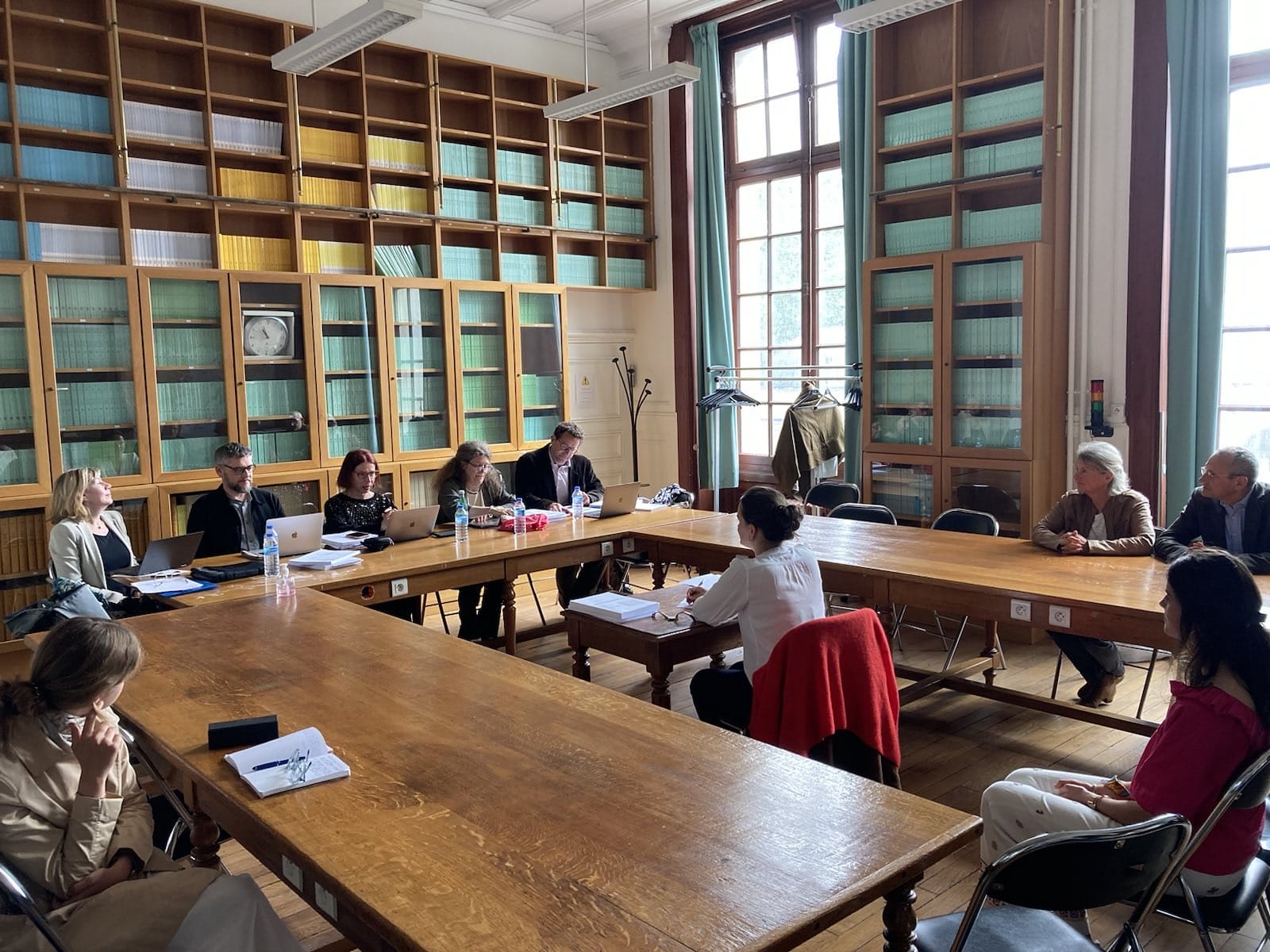When an art history thesis tells the story of the “birth of a museum-sacristy”
Last May, Marie Vergnes brilliantly defended her thesis entitled The Holy Sepulchre, “pivot and heart of worlds”: use, display and preservation of Catholic objects in the basilica since 1847 at the École Pratique des Hautes Études. We met her.
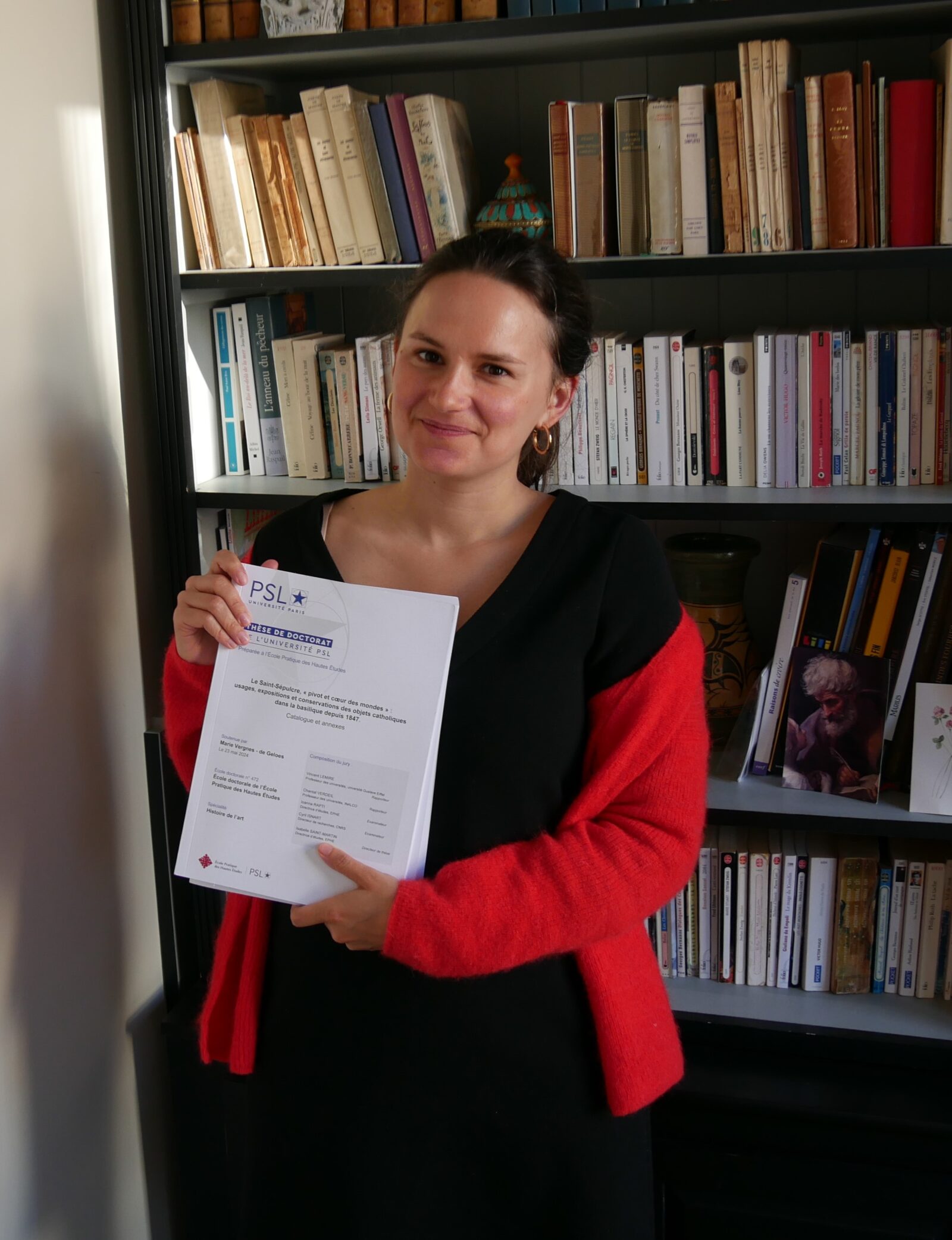
Marie, how did you end up working on the collections of the Terra Sancta Museum?
When I was studying history of art, there was a partnership between the students of the École du Louvre and the Terra Sancta Museum. I leapt at the opportunity! In my exchanges with Fr. Stéphane and Marie des Neiges, at the time a volunteer there, several potential subjects for research emerged. I wanted to work on the material heritage and I was very interested in the religious side. There had been inventories of objects almost everywhere in the Custody during the last two centuries, and I began to study them. The idea was to draw up a general table of the property of the Franciscans, but it remained very much a subject of archives. Going around the churches in the Holy Land, I saw all the interest in the field and so I became oriented towards a case study. I reduced my subject to the objects in the Basilica of the Holy Sepulchre, privileging the French point of view, in particular for reasons of linguistic comprehension of the sources.
What are your sources?
Mainly accounts by travellers and pilgrims, articles in the press, photo collections, archive documents and inventories. The Archives of the Custody of the Holy Land are the ones I consulted most. There were also those of the Statu Quo, of the Latin Patriarchate of Jerusalem, and then of other congregations such as the Assumptionists and the Pères Blancs. Then, in Rome, I consulted the Archives of the Oriental Churches a lot and those of the Propagation of the Faith. I also studied the diplomatic archives of the Consulate-General of France in Jerusalem.
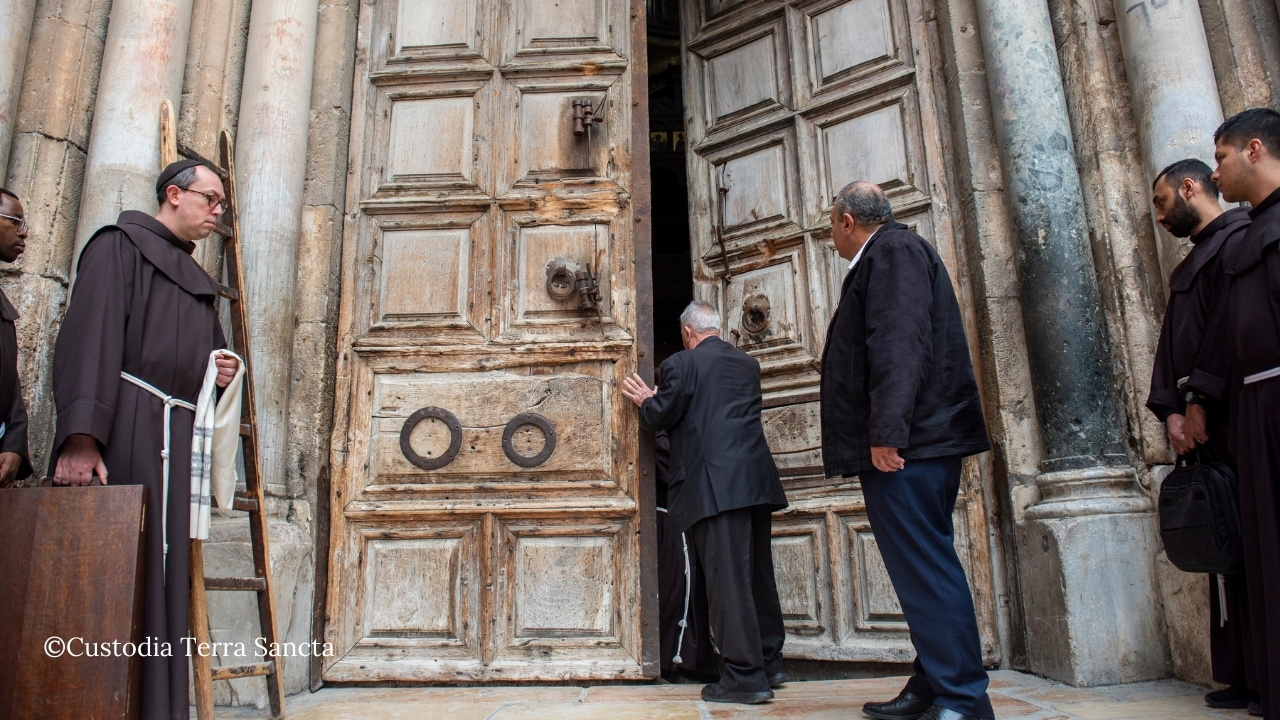
Your work covers the period from 1847 to the present, why these dates?
1847 is the year when the Latin Patriarchate of Jerusalem was re-established which upsets the Franciscan prerogatives. A few years later, the Status Quo was fixed (in 1852-53). It was also in the middle of the 19rth century that the door of the Holy Sepulchre remains open every day. At the beginning, I thought of stopping at the Vatican Council and its consequences on the Roman liturgy, but I lost all the part on the birth of the Terra Sancta Museum which is the completion of the Friar’s’ progressively becoming aware of their heritage.
How did you select the objects you studied? And how many objects are we talking about?
I did about thirty case studies. Three categories stand out which form the plan of my thesis: the objects which remain in the Basilica all the time (such as the ornaments of the Façade of the Edicule of the Resurrection), the objects that come and go as they are used or displayed in the Basilica but kept in the stores and the sacristies (such as the liturgical vestments of Christ’s Funeral), and the objects which only pass through its walls, essentially objects of private devotion, rosaries and relics of all sorts, which follow the routes of the visitors and pilgrims. This last category is the most difficult to historicize as it is difficult to trace the manufacture and the itinerary of these pieces. I went through the private collections of devotional objects in France with a fine toothcomb, such as that of the association Trésors de Ferveur in Chalon-sur-Saône or that of the Museum of the Visitation in Moulins.
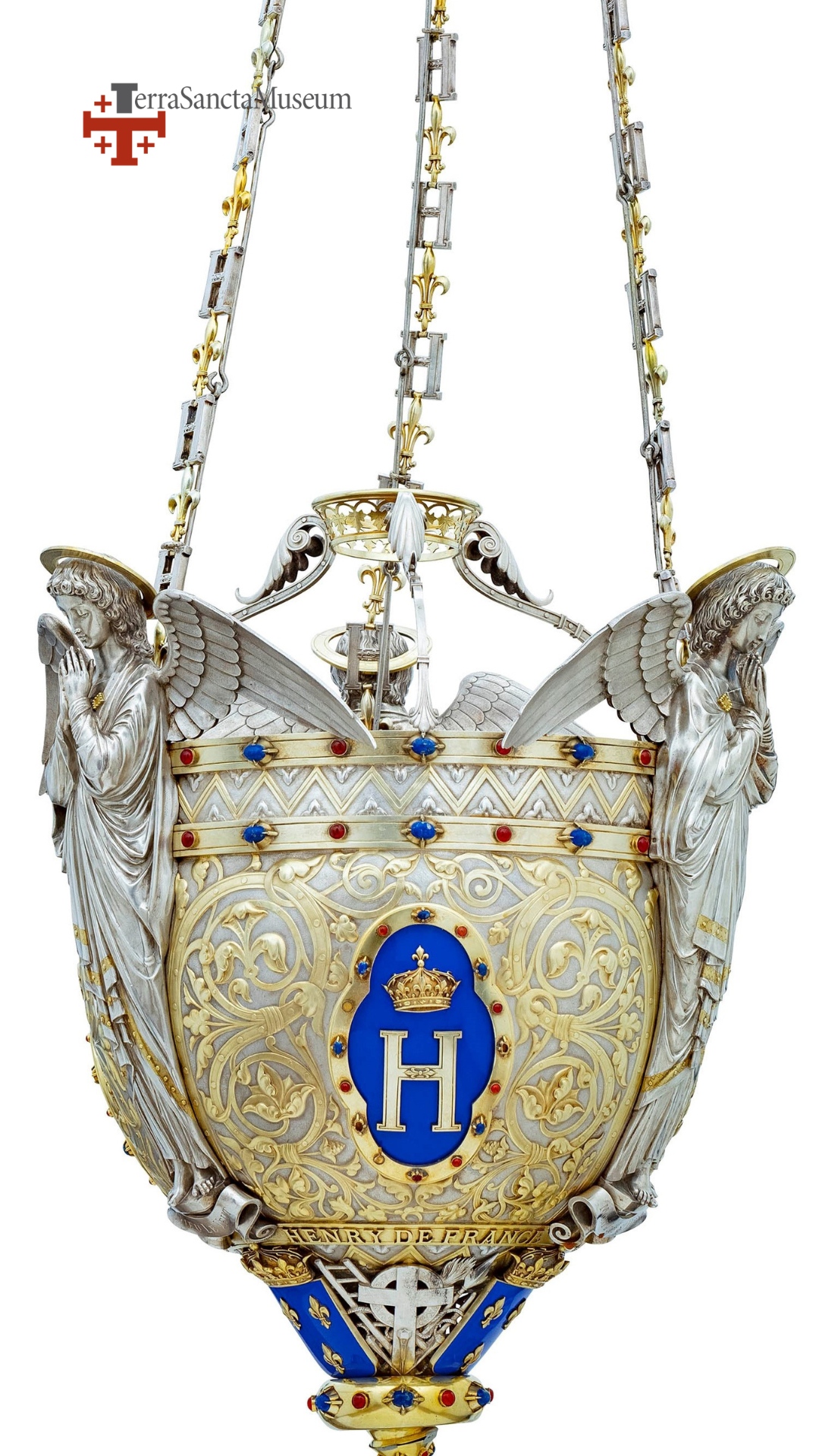
Why stop on these “minor” objects of piety?
These objects were made to nourish the devotion of the faithful, to bring them closer to Jerusalem and reproduce it elsewhere in some way. In France, they have been almost forgotten. I am thinking of a reliquary-frame made by the Visitandines, on which different fragments and relics of the Holy Land are assembled to compose a visual summary of a pilgrimage to the Holy Places. Studying these objects is like taking a photo of a second of popular devotion which no longer exists in this form. It is actually more an anthropological study than an artistic one, but it is fascinating. You can also see the difference between what we see today in the souk and what used to be made. I have the impression that we are now flooded with olive wood whereas in the past, the olive tree was only used for the stones! In the 19th century it would have been considered very badly to cut down an olive tree to turn in into pieces and sell them to pilgrims.
Can you share with us one of your discoveries, an aspect that particularly left its mark on you?
The sacristans and the dragomán(i.e. the interpreters) are essential in the Basilica and act as a link between different worlds. They are a bridge between the pilgrims, in particular the priests who use the sacred vessels, and the Franciscans. Between the local Palestinian Christians and the Western pilgrims who are passing through. They have much greater power and a far more important role that you think. They are supervised by different political authorities which are concerned by this power. I found letters from the consuls of France who describe the role of the sacristans. To give you an idea, one of the said, and I’m summarizing of course: “Be careful, there is a little chap lost in the Holy Sepulchre on whom diplomatic relations with Russia depend!”I would have loved to have gone much further in my research with access to the personal archives of these men, trace their trajectory etc..
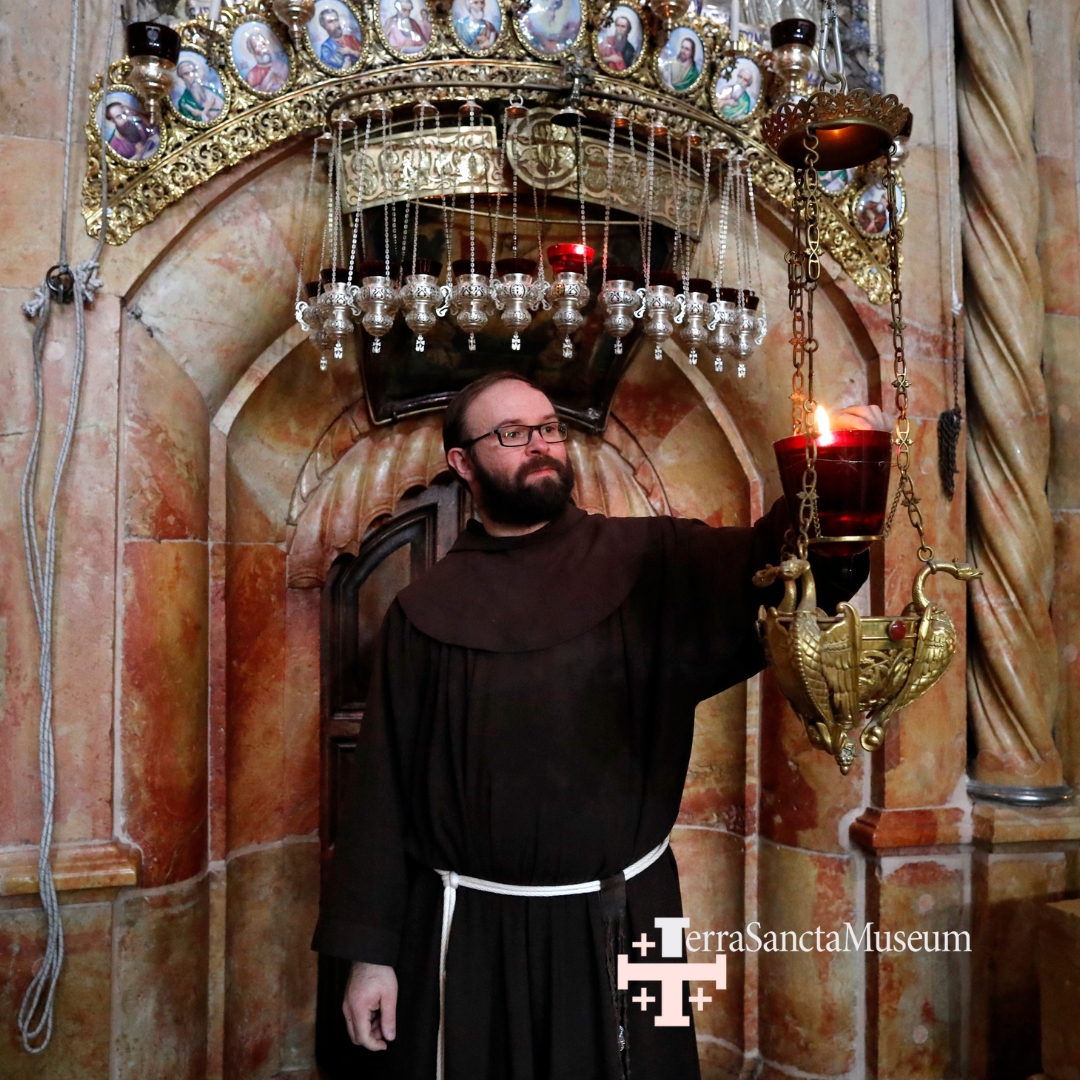
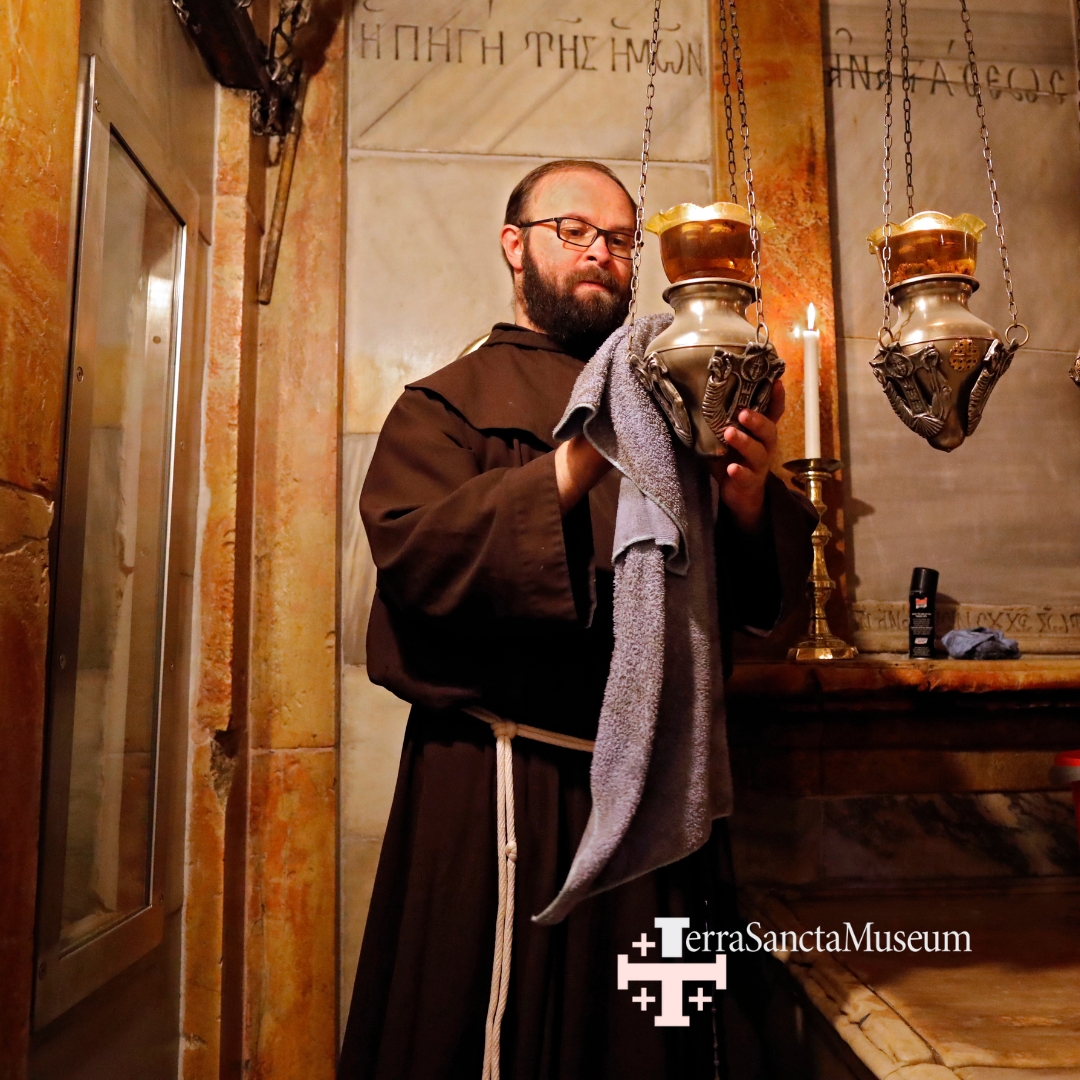
What is also fascinating regarding them is that they are in charge of the objects. One of the aspects of my thesis was to show that the liturgical use of the objects influences their preservation in a thousand ways. The value of the collections of the Custody, beyond the artistic or financial value, is that the objects are attached to a liturgy. And their holiness is always reactivated by use, use which depends on the goodwill of the sacristans once again! With the stakes of the museum, there will be a new balance to be found, not to mention negotiation between the players of the museum and the players of the Basilica, to succeed in keeping this use. Excessive museumification could make certain objects fall into oblivion and make them lose their holiness.
We have seen the creation of several museums by congregations or Christian communities in Jerusalem in the past few years.
This is effectively a phenomenon shared by many Christian communities in Jerusalem, This shows their wish to assert that they belong to the history of this place and to remind people that this heritage belongs to them. I concentrated on this movement of conscientization with the Latins, and the Franciscans in particular. I studied their way of presenting the works, with the first visits to the sacristy, first for certain important visitors and then for groups of pilgrims during the 19th century. Consciously or note, there is a strategy for the heritage which is being set up. With the return of pilgrims en masse at the end of the 19th century, in particular the Pilgrimages of Penitence, numerous accounts are published. The travellers relate their visit and describe the works that they were able to see in the sacristy of the Basilica or St Saviour’s Convent. The Terra Sancta Museum is the completion of this long movement of awareness of their heritage.
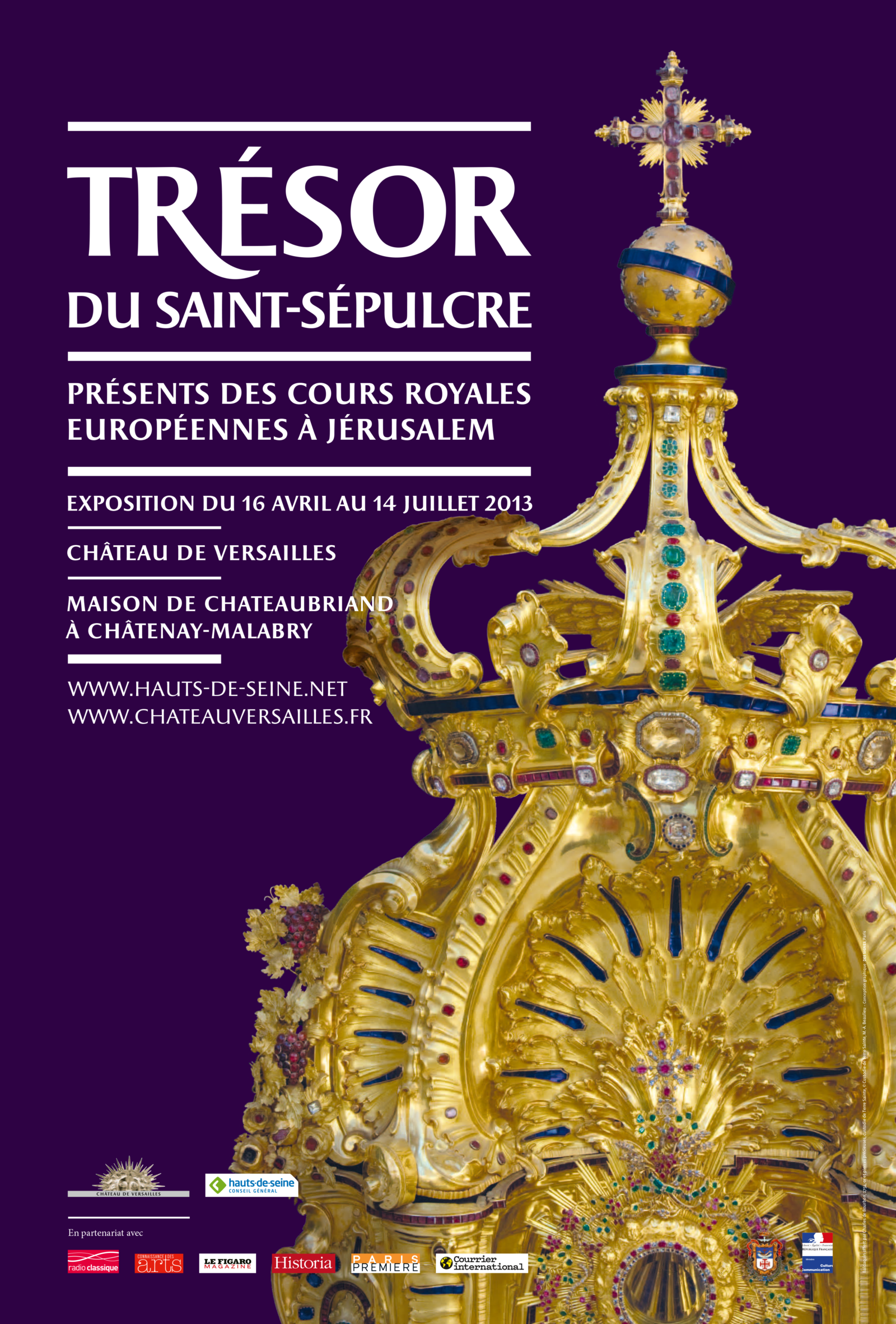
Is the expression of treasure already mentioned ?
I worked a lot on this expression of “Treasure of the Holy Sepulchre.” It is recent, as it was the exhibition at Versailles, in 2013, that really put it on the map. Previously we spoke more of the “Treasure of the Basilica” or “Treasure of St Saviour.” It has to be said that many objects offered to the Basilica or to the Holy Land are kept at St Saviour. Because of the comings and goings of the pieces between the chapels of the Basilica and the secret reserves, St Saviour is directly attached to the complex of the Holy Sepulchre. It is a sort of “second” sacristy of the Basilica. Besides, it is for this reason that the last part of my thesis on the birth of the Terre Sancta Museum has the title : “Birth of a museum-sacristy.” There are many other museums of sacred art attached to a sacristy but none has a museum project of this extent or its political and social dimension.
What would you like to say to the friars after these years spent in their “company”?
That they are not museum guardians but missionaries. Their mission today is through cultural enterprises like the museum, but it is pastoral above all. This is why I insist on the anthropological dimension of their heritage. Its preservation is to be studied in greater depth. All these objects say something about the hand of the man that at a given moment in these very particular places. There has already been an evolution in the discourse of the museum. At the beginning, it was a question above all of displaying the treasure, but it seems to me that the recent orientations are tending towards a better consideration of this anthropological dimension. Then, I would like to encourage to friars to welcome more researchers. I think that the world of research has surpassed this theoretical confrontation between the religious domain and the scientific domain. Researchers know that the religious is part of global history and the missions of the Custody can be of interest as such. They have a curiosity which is well-meaning and they want to study and understand the Custody. I think that the Custody has every interest to let itself be studied by researchers and not necessarily on its side. There is also good faith in research ! The apostolate goes beyond words by the simple fact of meeting their needs. Welcoming them is also to offer them an experience of the sacred which passes through their language, the language of research.
